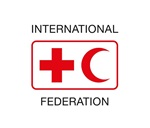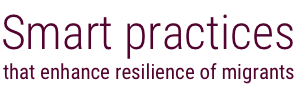A refugee-specific health insurance mechanism.
In July 2014, UNHCR’s Kuala Lumpur office launched a health insurance scheme to provide access for refugees to Malaysia’s national insurance system, particularly for second line treatment. The programme aims to help refugees improve their access to health services. The insurance covers individuals and families for a premium of 38-43 US dollars per year, and covers treatments of up to 3,750 US dollars. All 154,148 UNHCR card holders are eligible for the insurance scheme. Refugees can present their UNHCR cards to receive treatment at hospitals in the country without the need for payment once they enrol for the scheme.
Services covered include: (a) in-patient treatment; (b) room and board for up to 25 days; (c) intensive care for up to 12 days; (d) hospital supplies and services; (e) operating theatre; (f) surgical fees; (g) anaesthetists’ fees; (h) in-hospital physician visits; (i) in-hospital specialist consultations; (j) ambulance fees; and (k) medical reports. UNHCR ran mobile insurance events to make it convenient for refugees and asylum seekers in various locations to enrol in the programme.
The Interim Federal Health Programme in Canada provides limited, temporary health-care coverage to protected persons, including resettled refugees, refugee claimants, victims of human trafficking who have a valid temporary resident permit, and detainees.
In the first year from July 2014, 19,618 refugees were covered by the programme.
Design. [P1] Focuses on the vulnerability of migrants who cannot cover the treatment costs of more serious illnesses.
Implementation. [P6] Partnership between UNHCR and insurance companies to support refugees.
- Logistically challenging to ensure all refugees are aware of the scheme (due to their geographical distribution).
- Many do not understand the concept of insurance and hence are unwilling to sign on while healthy.
- Providers need to tailor a sound enrolment strategy based on an understanding of the refugee community dynamics.
- The insurance scheme needs to engage with providers who are willing to adapt their services to cater for the refugee community (provision of interpreter services, community based outreach).
Smart practices
Smart practices report and database survey
About the report
People migrate in pursuit of a better life for themselves and their families. As described in the International Federation of Red Cross and Red Crescent Societies’ (IFRC) Policy on Migration, “migrants are persons who leave or flee their habitual residence to go to new places – usually abroad – to seek opportunities or safer and better prospects.
Read more
About the International Federation

